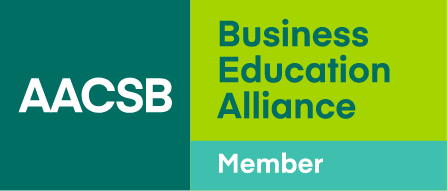Supporting Faculty in Tech-Engaged Teaching
- Effective online teaching requires more than content delivery—it demands an adaptable design that supports varying learning styles and paces.
- The use of technology, such as personalization software, virtual reality, and gamification, is a key component in fostering students’ engagement with the curriculum.
- To help faculty meet the demands of modern classrooms, administrators should prioritize structured training programs that connect emerging technologies to evidence-based teaching practices.
Transcript
Jacob Chacko: [00:15] There are several challenges today. We all know that technological distractions are one of the main things, especially social media, smartphones—everyone has them. And that really makes it difficult for students to focus in the classroom.
[00:32] Of course, after COVID, we see a lot of emotional and psychological issues. I've been in this business for over 30 years. I see more anxiety.
[00:42] Students are really getting paranoid about things, exam-taking fears, and those kinds of things make it difficult.
[00:52] Online education, you know, it has become, people go for online education because of convenience, rather than whether that is a necessity or if that is appropriate for that particular person's learning style. So, we have students who really excel in the online environment, and we have students who really cannot keep up.
[01:16] And so faculty is trying to kind of provide something that is for everyone, which is now appropriate for no one; that's the third one.
Students who are not really focused are not engaged.
[01:24] And then, of course, we have the large class sizes. I mean, especially with budget constraints nowadays and enrollment dependence, we are now required to make classes larger because of fewer resources, especially larger online classes. So, students who are not really focused are not engaged.
[01:45] Some of the things we do, we try to make sure that the faculty is up-and-up on the technology, obviously.
[01:54] One of the things we have done over time is try to create more, we've gotten to augmented reality, virtual reality, using that technology. For certain classes it works very well, especially for complex content, it works very well.
[02:15] That also cannot be mass delivered. When you have 150 students in a classroom, that kind of technology, at least for now, students cannot afford, so we have to provide that.
[02:27] Gamification is another thing. Our students seem to be into games—that's the new generation. So, we try to have faculty create games that make learning fun; that's another way.
Now the faculty has to customize for student needs.
[02:41] We also try to personalize it as much as possible. There is some software that allows us, allows students to progress at different paces. So, you know, the people who can grasp quickly can progress faster, or their assessment can be at a higher level.
[03:01] That's another way we try to personalize it as much as possible to keep them engaged and not get bored.
[03:07] All of this technology, technological changes, lifestyle changes, motivational changes, all of those things have created a faculty role to be an effective faculty, much harder. For example, now the faculty has to customize for student needs.
[03:31] Larger classes mean that there are different learners there. How do you make it adaptive?
[03:38] The whole concept of faculty being an instructor versus a researcher, the emphasis has always been, okay, you teach, that's your job, but we reward research, right? Well, we have to now reward lifelong learning.
We need to start by really focusing on reward systems and recognition for faculty being an effective instructional person.
[03:58] Take a faculty member who is an associate professor or a professor, what is their motivation to go and learn, to incorporate virtual reality in their classes?
[04:09] They would rather go and deliver a lecture, then go home. Well, they can't because now we have high-flex classes. What are they?
[04:16] We have online students, onsite students, and synchronous students. So, you've got faculty standing in front of a few students with a lot of screens.
[04:29] This person cannot just focus on one group; they have to put up instructional materials while talking so that all the groups can see, and students at a distant location aren't ignored.
[04:43] I'm trying to say that the faculty job is extremely difficult, especially to be an effective faculty member.
[04:50] So, what we have, as school administrators or business school administrators, is that we need to start by really focusing on reward systems and recognition for faculty being an effective instructional person or instructor in the classroom.
Faculty members needs to take students' feedback to see how effective he or she is in the classroom.
[05:12] Faculty needs to, we need to make sure that faculty does not take feedback as a nuisance. Like when I was a student, the faculty used to say, 'What do students know? I know better.' Well, content, yes, you do. Technology? I doubt it.
[05:33] So a faculty member needs to take that feedback to see how effective he or she is in the classroom.
[05:39] And we need to motivate faculty to take that feedback in a positive way and, more importantly, try to make it relevant to their career success as well as satisfaction.
[05:51] To be effective in the classroom, I need to learn the latest and greatest technology. I need to incorporate it. I need to change the way I learn because how people learn is quite different from how I learned.
[06:04] We believe many faculty members have taken on that challenge and are trying to adapt.





